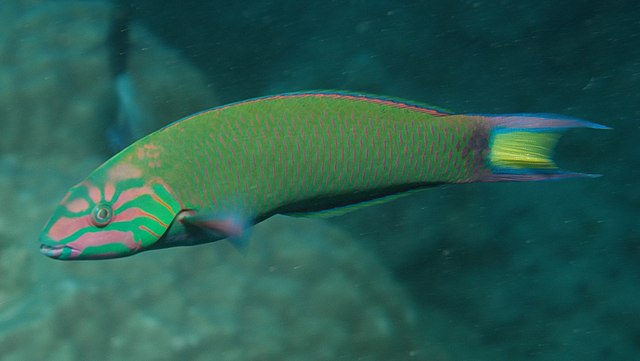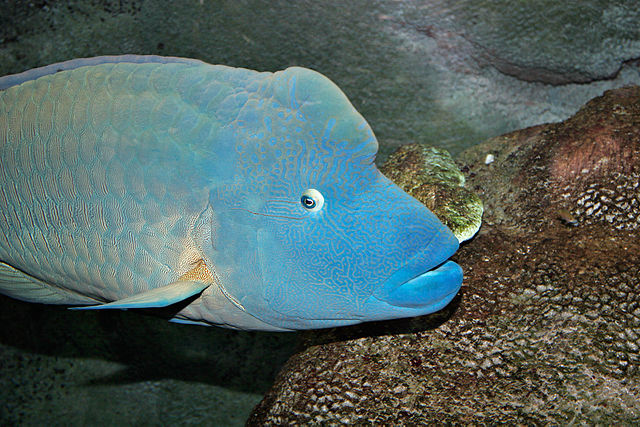The wrasses are a family, Labridae, of marine fish, many of which are brightly colored. The family is large and diverse, with over 600 species in 81 genera, which are divided into 9 subgroups or tribes.
They are typically small, most of them less than 20 cm (7.9 in) long, although the largest, the humphead wrasse, can measure up to 2.5 m (8.2 ft). They are efficient carnivores, feeding on a wide range of small invertebrates. Many smaller wrasses follow the feeding trails of larger fish, picking up invertebrates disturbed by their passing. Juveniles of some representatives of the genera Bodianus, Epibulus, Cirrhilabrus, Oxycheilinus, and Paracheilinus hide among the tentacles of the free-living mushroom corals and Heliofungia actiniformis.
Wrasse
Cleaner wrasses, Labroides sp., working on gill area of dragon wrasse Novaculichthys taeniourus, on a reef in Hawaii
Giant Napoleon wrasse Cheilinus undulatus in Apo Reef, Philippines
Humphead wrasse, Cheilinus undulatus, Melbourne Aquarium
A fish is an aquatic, anamniotic, gill-bearing vertebrate animal with swimming fins and a hard skull, but lacking limbs with digits. Fish can be grouped into the more basal jawless fish and the more common jawed fish, the latter including all living cartilaginous and bony fish, as well as the extinct placoderms and acanthodians. Most fish are cold-blooded, their body temperature varying with the surrounding water, though some large active swimmers like white shark and tuna can hold a higher core temperature. Many fish can communicate acoustically with each other, such as during courtship displays.
Fish
Dunkleosteus was a giant Devonian armoured placoderm, c. 400 mya.
Largest: whale shark
Smallest: e.g. P. progenetica








